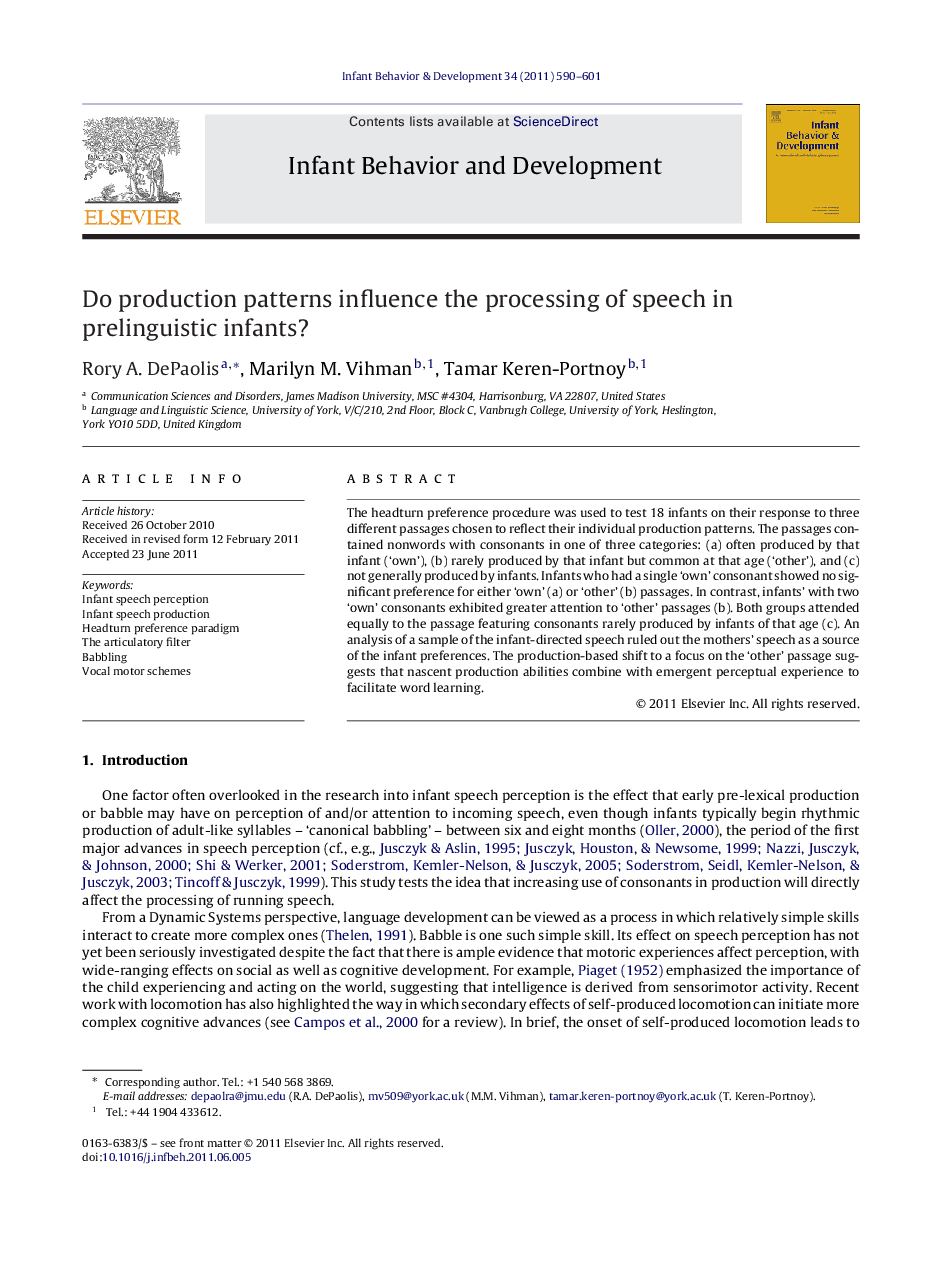| کد مقاله | کد نشریه | سال انتشار | مقاله انگلیسی | نسخه تمام متن |
|---|---|---|---|---|
| 917285 | 919259 | 2011 | 12 صفحه PDF | دانلود رایگان |

The headturn preference procedure was used to test 18 infants on their response to three different passages chosen to reflect their individual production patterns. The passages contained nonwords with consonants in one of three categories: (a) often produced by that infant (‘own’), (b) rarely produced by that infant but common at that age (‘other’), and (c) not generally produced by infants. Infants who had a single ‘own’ consonant showed no significant preference for either ‘own’ (a) or ‘other’ (b) passages. In contrast, infants’ with two ‘own’ consonants exhibited greater attention to ‘other’ passages (b). Both groups attended equally to the passage featuring consonants rarely produced by infants of that age (c). An analysis of a sample of the infant-directed speech ruled out the mothers’ speech as a source of the infant preferences. The production-based shift to a focus on the ‘other’ passage suggests that nascent production abilities combine with emergent perceptual experience to facilitate word learning.
► Favored babbling patterns affect the processing of speech in the pre-linguistic period.
► Infants who have developed mastery of more than one consonant in babbling show preferential interest in consonants not yet in their repertoire.
► The distribution of consonants produced in infant directed speech cannot explain individual infant babbling patterns.
Journal: Infant Behavior and Development - Volume 34, Issue 4, December 2011, Pages 590–601